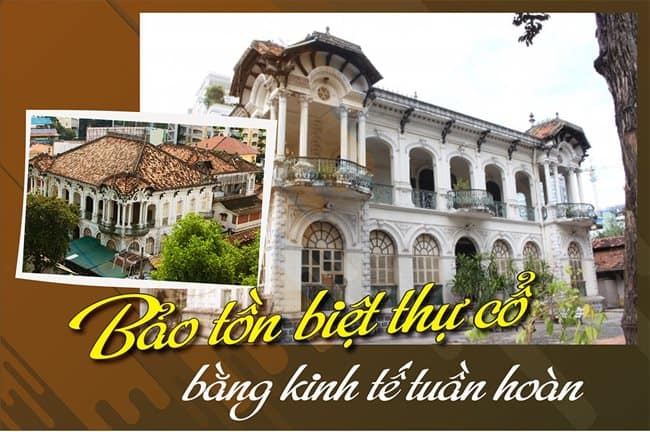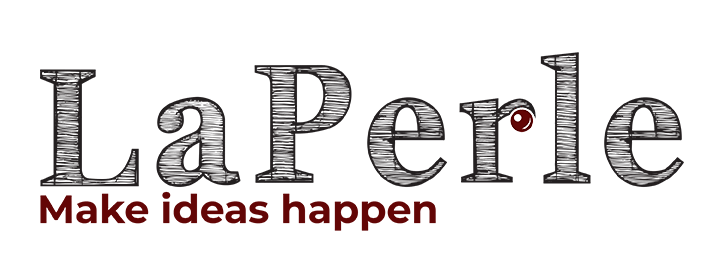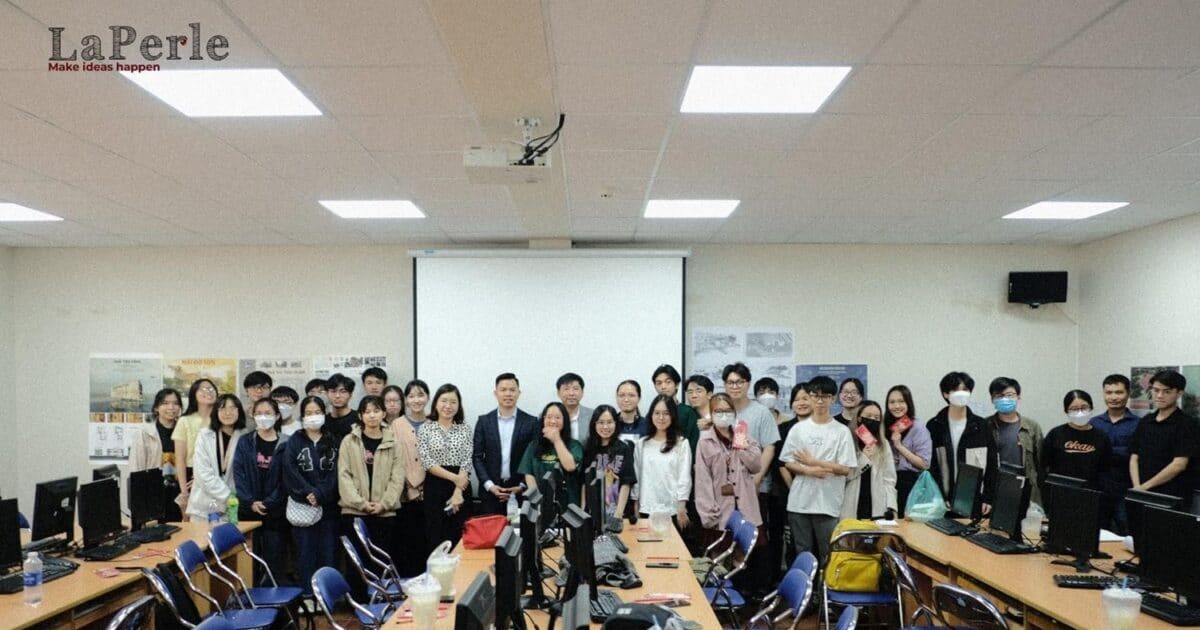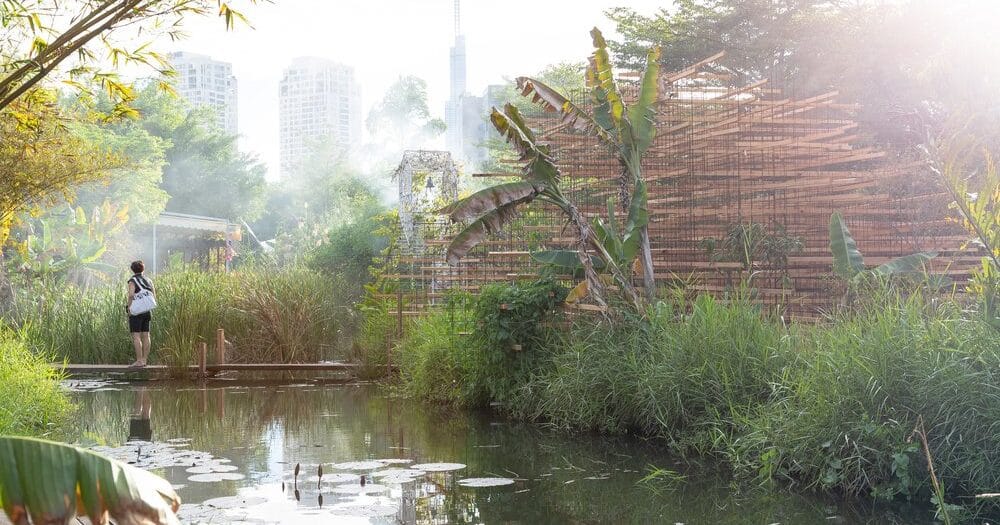Preserving Historic Villas Through Circular Economy
Ho Chi Minh City is home to over 1,200 historic villas of “heritage economic value,” yet many of these are gradually being replaced by new constructions. Alarmingly, some villas are reported to have disappeared without a trace. Architect Khiem Nguyen, a lecturer at the University of Architecture Ho Chi Minh City, and Mr. Luigi Campanale, Design Director and CEO of SCE Project Asia, have proposed solutions to address this issue.
 |
| Architect Khiem Nguyen, Lecturer at University of Architecture Ho Chi Minh City. |
Real Estate Market: How Do You View the Cultural and Economic Value of Historic Villas in Ho Chi Minh City, Especially Those Over 100 Years Old?
Khiem Nguyen: Architectural works with cultural heritage value help a city retain its “genius loci” and identity amid development. Villas built during the French colonial period, featuring classical French architecture adapted to the tropical climate with airy verandas, tiled roofs, and Eastern-style decorative details, exemplify what we call “Indochine architecture.”

Such architectural heritage also attracts tourists, generating “heritage economic value.” This, in turn, provides the city with revenue to maintain and preserve these old buildings while allowing for the construction and development of modern projects in the future.
Recently, There Have Been Reports of Certain Historic Villas “Disappearing” for Various Reasons. How Severe Is This Issue?
Khiem Nguyen: According to data from authorities, Ho Chi Minh City currently has about 1,227 old and historic villas scattered primarily in District 1, with around 800 concentrated in District 3 and other districts.
In a report by the Ho Chi Minh City Villa Classification Council submitted to the city’s People’s Committee in October 2019, the council has examined 926 villas, of which 110 were selected for classification and legal procedures to preserve them. Some villas with historical, cultural, and architectural aesthetic value need to be preserved in their original state, such as the Phuong Nam Villa at 110-112 Vo Van Tan (District 3) and the house at 53-55 Tu Xuong (District 3).
Notably, the Phuong Nam Villa, designed in classical architectural style with materials suited to the tropical climate, is nearly 100 years old. Despite serving as a residence for a single family and not generating income from its use, the villa has been preserved almost entirely intact, including its antique interior. This uniqueness has given the villa a high heritage value, estimated at around 700 billion VND in 2015. The villa was restored and preserved nearly intact when purchased by a new owner.
Unfortunately, around 560 villas have already vanished. For instance, a 100-year-old villa at 237 No Trang Long (Binh Thanh District) and a villa at 6C Tu Xuong (District 3) were demolished before authorities could complete the inventory and issue legal decisions to preserve these buildings. This represents a “glitch” in the implementation of state policies.
For villas classified in Group 3 (not requiring preservation), the property owner can decide the fate of the architecture on their land, making the preservation of such historic structures dependent on the owner’s discretion.
How Can We Prevent This “Disappearance” from Persisting?
Khiem Nguyen: According to economic market development rules, areas with numerous historic architectures, like the “villa neighborhood” in District 3 located in the center of a city with over 10 million people, are under immense pressure due to the supply and demand dynamics. Thus, we face a core conflict between preservation and economic development.
In each specific case, we should evaluate these historic villas from both heritage value and functional value perspectives. The assessment should consider not only individual properties but also the overall aesthetic and historical significance of the urban design.
I believe the government should establish clear legal frameworks and guidelines to help property owners understand whether their villa is classified as a heritage preservation, restoration, redevelopment, or renovation project. This clarity will help determine the extent of permissible modifications.
 |
| Mr. Luigi Campanale, Design Director and CEO of SCE Project Asia. |
An Old Villa in the Central Area That Is Not on the Preservation List Is Often Devalued. Additionally, the Preservation Procedures Can Be Challenging, Leading Some Owners to Make These Villas “Disappear” or “Remove” Them from the Preservation List. Do You Think Selling Historic Architecture in Central Districts Is More Profitable Than Preserving It?
Luigi Campanale: Preserving a heritage architectural site is much more complex a process than selling it, which is why many choose to sell for immediate financial gain. I believe these individuals may regret their decision later as they lose a valuable piece of heritage for themselves and the city.
However, many investors have recognized the long-term value and are engaging in the heritage architecture market. For instance, a foreign investor bought an old villa on Vo Van Tan Street for tens of millions of dollars, recognizing its long-term value. In 5-10 years, the value of this villa is expected to increase significantly. Vina Capital also purchased Sofitel Hanoi for this reason, and it remains one of the highest-grossing hotels in the country due to tourists’ preference for historic accommodations.
Unfortunately, in many Asian markets, the value of old properties is declining. Many historic villas are demolished to make way for new buildings, overlooking the fact that many old houses have higher quality than many newly constructed ones, not to mention their economic value.
So How Can Property Owners Maintain Historic Architecture and Maximize Its Economic Value for Both Themselves and the City?
Luigi Campanale: To preserve and enhance the economic value of such properties, we must integrate economic benefits into the preservation process. For example, these properties can be repurposed for tourism, becoming attractions, restaurants, or hotels.
People often discuss the circular economy in terms of recycling plastics or waste but rarely apply it to the reuse of architectural heritage. We should consider repurposing old buildings in innovative ways before opting for new constructions. As the city aims for sustainable development, reusing architectural heritage is also crucial.
However, maintaining a stable real estate market is essential to convince property owners to preserve these assets. Owners will be more inclined to retain their properties if prices remain stable. When the city attracts tourism through its cultural beauty, the value of these properties will increase steadily.
In Italy and Europe, tearing down century-old architecture is unheard of, just because the property owners do not have the right to do so and they acknowledge the value of their properties. New high-rise constructions in historic areas must adhere to city planning regulations.
Who Should Be Involved in the Preservation of These Architectural Heritages?
Luigi Campanale: From my perspective, to encourage property owners to preserve, there must be supportive policies. Policies need to be clearer to prevent confusion and legal loopholes.
The government should implement public-private partnership (PPP) investments in preservation cases. Specifically, tax incentives could encourage owners to use their properties commercially. Additionally, financial support for maintenance and restoration is necessary, as these costs are significant.
Furthermore, the government should explore “Transfer of Development Right” schemes to balance interests between property owners and budget constraints. Under this system, development rights belong to landowners while development value benefits the private sector.
Thank you!
LaPerle – Make Ideas Happen
LaPerle Architecture’s philosophy lies in crafting timeless and enduring designs that embody the soul of their places, or “genius loci,” and creating elegant, inspiring spaces that align with future design paradigms.
Contact: +84 (0)86 6727901
Email: info@laperle.vn
Website: www.laperle.vn





